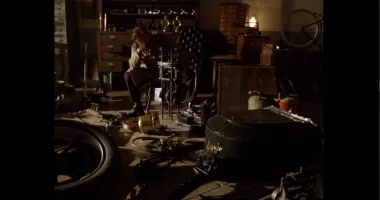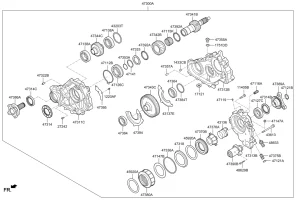dgorbenko
Newish Member
- Joined
- May 5, 2022
- Messages
- 18
- Reaction score
- 18
- Points
- 3
My transfer case failed and I disassembled it. Was very surprised to find out that there is no mechanism to disengage friction disks from steel, nor to engage them (squeeze them to create a lot of friction). The small electric motor attached to the case is an oil pump, also there is a sensor next to propeller shaft, which I suppose, counts rotations. There is no temperature sensor, and no way to reduce friction between disks. There is a wave disk spring which creates some tension between friction and steel disks.
Which means, afaik, there is no way to reduce heat generation if disks experience a lot of friction. Only oil pump (I hope it works all the times).
So, I wonder how the Kia detects any failures with transfer case ? In my case the wave disk spring had broken into 5 pieces, and the smallest piece was shredded into dust by gears. There was a nocking sound coming from the transfer case, and after I opened the case it smelled with burned oil. Btw, the plastic filter and plastic cap were also melted due to heat being generated by friction disks, and guess where these plastic details are located ? Right next to friction plates, there is 5-6mm distance between them. And of course, my Stinger didn’t show any light on a dash panel, all was fine expect this nocking sound. This failure happened after I pressed gas pedal to the floor. Kickdown.
Since friction disks are connected to propeller shaft, and steel disks to front shaft, and they are always under friction, at any moment the rear wheels spin faster/slower the than front ones there will be heat generation happen in the transfer case. This is why Kia dealers tend to blame tires in transfer case issues.
Now I’m looking for parts to fix my transfer case: friction disks, wave disk spring to press on friction package, plastic cap + filter.
If someone knows where to find them, please, let me know.
Thank you so much.
Which means, afaik, there is no way to reduce heat generation if disks experience a lot of friction. Only oil pump (I hope it works all the times).
So, I wonder how the Kia detects any failures with transfer case ? In my case the wave disk spring had broken into 5 pieces, and the smallest piece was shredded into dust by gears. There was a nocking sound coming from the transfer case, and after I opened the case it smelled with burned oil. Btw, the plastic filter and plastic cap were also melted due to heat being generated by friction disks, and guess where these plastic details are located ? Right next to friction plates, there is 5-6mm distance between them. And of course, my Stinger didn’t show any light on a dash panel, all was fine expect this nocking sound. This failure happened after I pressed gas pedal to the floor. Kickdown.
Since friction disks are connected to propeller shaft, and steel disks to front shaft, and they are always under friction, at any moment the rear wheels spin faster/slower the than front ones there will be heat generation happen in the transfer case. This is why Kia dealers tend to blame tires in transfer case issues.
Now I’m looking for parts to fix my transfer case: friction disks, wave disk spring to press on friction package, plastic cap + filter.
If someone knows where to find them, please, let me know.
Thank you so much.
Last edited:







